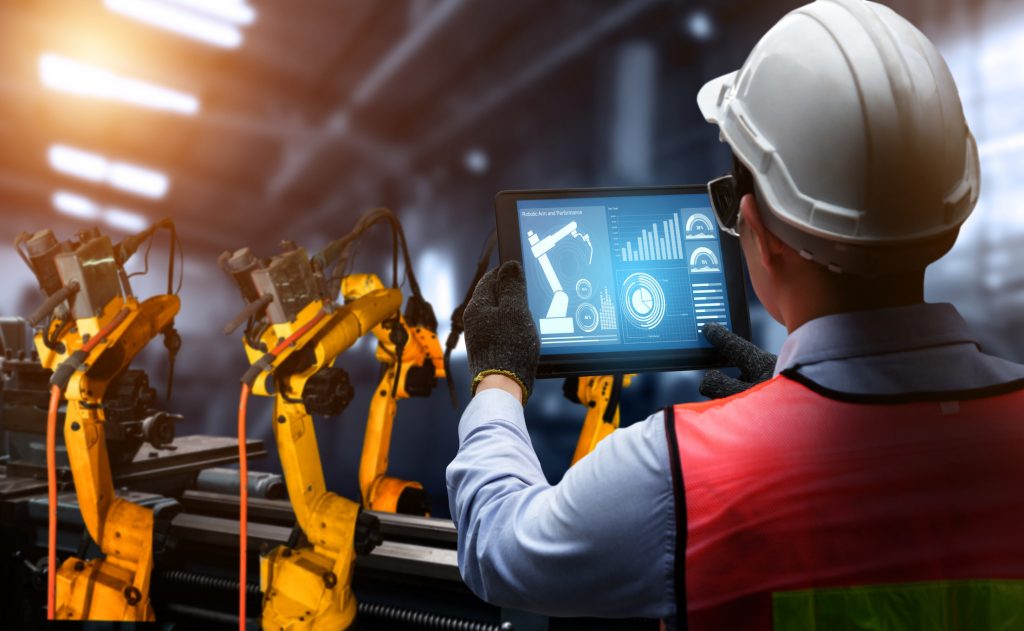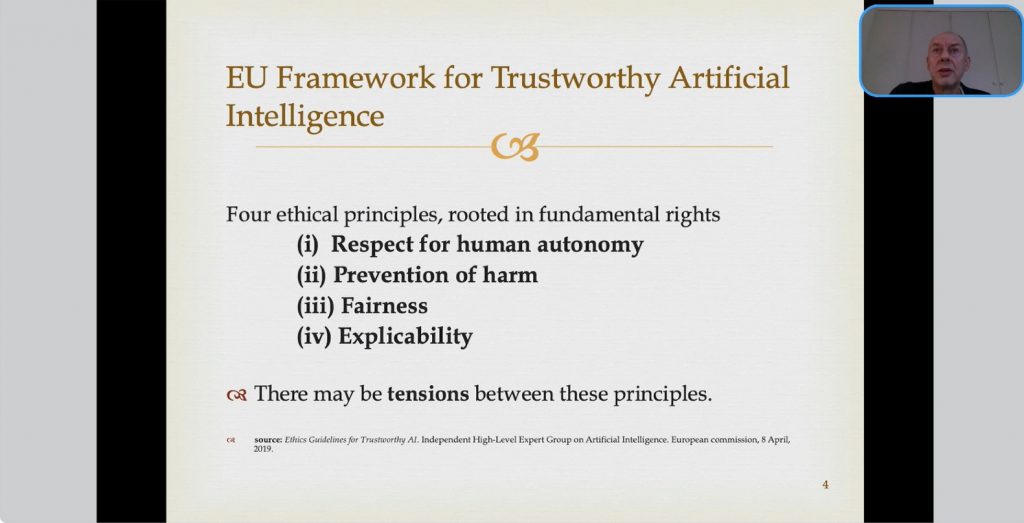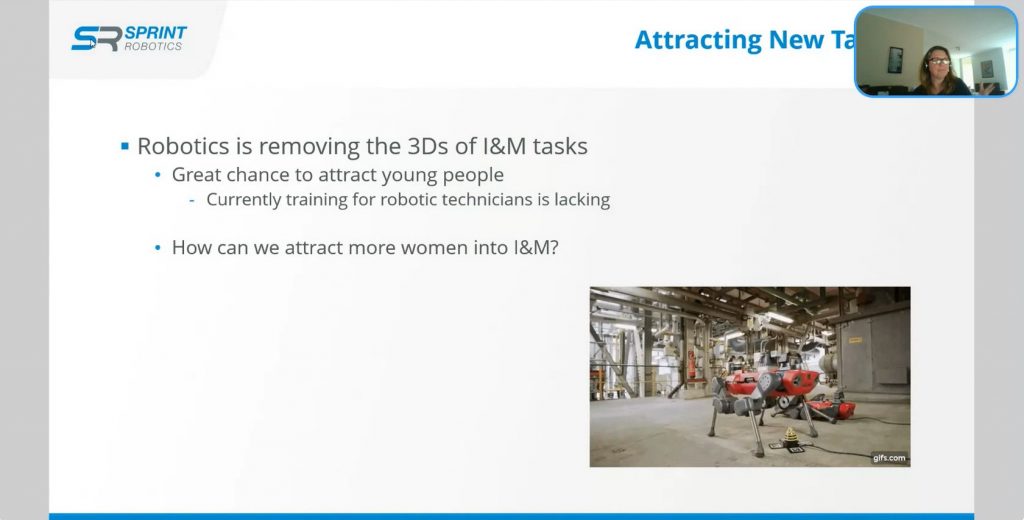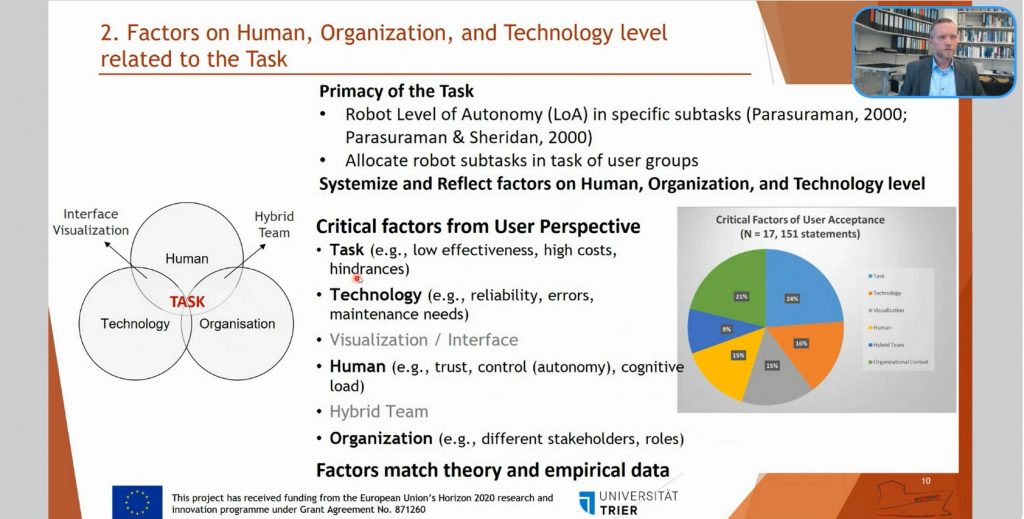Sensor mimics automatic human reaction to heat, could herald soft robots of the future
Beach bots, sea ‘raptors’ and marine toolsets mobilised to get rid of marine litter

Innovative technologies are under development to reduce plastic litter at sea by at least 50% © MOHAMED ABDULRAHEEM, Shutterstock
By Gareth Willmer
‘It’s the scale of it – it’s a global problem. You can guarantee that any beach you walk on, you’ll find pieces of plastic,’ said James Comerford, a senior researcher in materials and nanotechnology at SINTEF, an independent research organisation in Oslo, Norway.
Plastics are estimated to comprise 85% of marine litter, with 11 million metric tonnes entering the oceans annually and the volume potentially tripling by 2040. Some have predicted that, by weight, there will be more plastics than fish in the seas by 2050.
In light of the alarming outlook, innovative approaches are required to tackle the problem. This is exactly what the EU Mission “Restore our Ocean and Waters by 2030” is targeting, with the ambition of reducing plastic litter at sea by at least 50%, cutting microplastics released into the environment by 30%, and halving agricultural nutrient losses as well as the use of chemical pesticides.
To reduce pollution, the Mission is launching a ‘lighthouse’ in the Mediterranean Sea that will act as a hub to develop, demonstrate and deploy solutions far and wide across the world by getting all the relevant players on board. Its role is to connect and structure activities, disseminate and upscale solutions and mobilise relevant actors.
Its initial focus is on plastic pollution. Projects such as In-No-Plastic and AQUA-LIT are exploring ways to reduce the contribution of people and sea-based industries to plastic pollution, while the Maelstrom project looks at where marine debris is distributed and how best to remove it from the seabed and water. It is also exploring economically viable ways to recover and recycle marine plastic debris, such as circular product design for fishing gear.
The wide-reaching In-No-Plastic project, led by Comerford as the project coordinator, is developing a range of technologies that deal not only with easily visible, large pieces of plastics – or macroplastics – but also the insidious threat of tiny microplastics measuring less than 5 millimetres, and even smaller nanoplastics.
‘Macroplastics are going to need different cleaning technologies to microplastics, so we’re looking at the whole spectrum,’ said Comerford.
Several separate technologies that are currently under development can be deployed in tandem to clean up the water. A couple of them help to deal with microplastics by clumping them into more manageable sizes, one using biodegradable chemical substances called flocculants that cause particles to coagulate, and the other – known as SepaRaptor – using ultrasonic waves that push the particles into clusters.
These can be combined with another technology that uses a screen to sift out plastic debris.
On the macroplastics side of things is SEEker, a four-wheeled plastic-waste-collection robot being trained using artificial intelligence to identify and pick up litter from beaches and put it in a bin carried on its back. The robot will also have a loading station near the beach, where it can dispose of waste and recharge.
‘It’ll be entirely autonomous,’ said Comerford. ‘Because there’s so much litter and because it’s everywhere, you need something focusing on it all the time. To have solely a human influence is really time-consuming.’
Mobile application
Another technology, which includes features that could be key to tackling the issue of plastic pollution in the long-term future, is an application for smartphones. This encourages volunteers to gather litter and record data on their activities, using “social rewards” sourced via the local economy – for example, discounts on pizzas or at the gym.
However, the app will also eventually help to track the amount of plastic waste collected, recycled and used in products, allowing us to get more of a handle on how effectively the circular economy is working.
So many people say they include recycled material in products. If we’re really to make a difference and turn this whole thing round, that’s got to be countable
Although that function is currently under development, Comerford explained that it will be supported using photos and GPS data on collected litter, as well as blockchain technology – which can enable better tracing of the contents of goods by storing data on the movement of materials through a supply chain.
‘So many people say they include recycled material in products,’ said Comerford. ‘If we’re really to make a difference and turn this whole thing round, that’s got to be countable.’
But apart from the pure tech side, public buy-in for solutions to the plastic problem is crucial. Partners in In-No-Plastic, such as non-profit organisation Venice Lagoon Plastic Free (VLPF), are also conducting clean-up initiatives supported by the mobile application and gauging the attitudes of the public on plastic pollution.
Davide Poletto, an executive director at the organisation, says Venice is an ideal place to run plastic pollution initiatives, as a location with an enclosed area of water, and intense marine traffic, aquaculture, fishery activity and tourism. ‘The lagoon of Venice is the largest wetland in the Mediterranean basin and a World Heritage Site of UNESCO, and this is an extraordinary laboratory to work in because you have a lot of different problems,’ he said.
He also points out that the pandemic has provided a ‘unique opportunity’ to analyse just how much overtourism contributes to pollution, including that caused by plastics, and the capacity of the local ecosystem to recover. Poletto cites a study showing that 17 of 40 chemical contaminants previously found in the Venice lagoon were undetectable after early-2020 lockdowns, while the presence of many others was significantly lower.
Boosting awareness
Recent In-No-Plastic events appear to have shown promise for growing public awareness and interest in getting involved. In one clean-up event organised in Venice in 2021, 130 people collected three tonnes of waste, including more than 1,500 kilograms of plastics.
Poletto also cites figures from an ongoing awareness study carried out by his team on more than 1,500 people in Italy, the UK and Croatia, the vast majority from outside related work sectors. Over 85% of respondents per country said joining clean-up events had helped them better understand the seriousness of marine plastic pollution, while almost 95% identified microplastics as a bigger issue than macroplastics – suggesting understanding is now widespread on the perils of invisible fragments.
Poletto pointed to growing coverage in the news and social media, as well as first-hand experience. ‘It’s interesting to see how people are realising all those things,’ he said. ‘And it’s not that they are specialists.’
But apart from stimulating public interest, he said more knowledge is needed on sources of plastic pollution to better advise decision-makers on how to deal with it. Using another app that aids with beach litter identification as part of the Maelstrom project, VLPF found that on some beaches, up to 40% of plastics on nearby islands such as Pellestrina came from fishing gear – mostly mussel nets.
This is important to show, for instance, that a big proportion of plastics in these areas goes straight into the sea rather than originating in rivers, said Poletto. ‘Then there’s evidence brought to the public administration that we should do more in certain locations.’
Aquaculture challenge
Gear is a big issue in the aquaculture industry too, where there is also an urgent need to tackle plastic pollution given that it is the world’s fastest-growing food sector. Aquaculture is estimated to account for more than half of global fish consumption, and could reach over 60% in the next decade.
But Mariana Mata Lara, project manager at environmental technology organisation Geonardo, says that much more knowledge is needed on how to tackle plastic pollution from the sector, caused by items including cages, ropes, nets and buoys.
She also said we need to separate data on pollution caused by aquaculture, or farming of aquatic produce, from that caused by traditional fisheries that catch wild fish. ‘In reality, we don’t know exactly the amount of plastics that comes from this sector,’ added Lara.
With this in mind, a project she led called AQUA-LIT sought to create a knowledge base on both plastics and other marine waste before the problem gets too big as the sector surges. ‘In many things in life, we come up with solutions once the problem exists. The idea with AQUA-LIT was to go in parallel and start solving this as it grows, so we don’t later have to come up with solutions to cover what we did in the past,’ said Lara.
AQUA-LIT did this by developing a toolbox of measures to monitor and prevent marine littering in the sector, as well as to remove and recycle waste.
The idea with AQUA-LIT was to go in parallel and start solving this as it grows, so we don’t later have to come up with solutions to cover what we did in the past
The team gathered the information by working with research institutes, organisations and people involved in aquaculture in the Mediterranean, North Sea and Baltic Sea. Activities included interactive ‘Learning Lab’ workshops to discuss marine litter issues, exchange knowledge and brainstorm ideas.
More than 400 ideas and solutions
The resulting toolbox contains a variety of measures, arranged by topics including different sea basins, aquaculture types, and stage of removal and recycling, as well as policy recommendations. ‘In the toolbox, we have provided more than 400 ideas and solutions,’ said Lara.
As part of its work, AQUA-LIT has created an inventory detailing 65 sources of waste generated by aquaculture, a database on how European ports deal with litter and regional maps on percentages of aquaculture-related litter across its focus sea basins.
Lara added that many of these ideas can be applied or expanded on elsewhere. ‘We wanted this information to be useful not only for these three sea basins we worked in, so we created action plans to transfer the knowledge to other regions,’ she said.
As an example, Lara described how the resources had been used by the Global Ghost Gear Initiative, an alliance involving the fishing industry, private sector, corporates, NGOs, academia and governments that focuses on solving the problem of lost and abandoned fishing gear.
‘The Global Ghost Gear Initiative developed a best-practice framework for the management of aquaculture gear, and they used four of our reports, our marine inventory and our toolbox to help build it,’ said Lara.
With a section in the toolbox for people to contribute ideas, she hopes it will grow further and that the knowledge base will ultimately lead to more practical solutions. ‘The idea is that it’s for everyone and fed by everyone,’ she said.
Lara said that promise was shown by AQUA-LIT being invited to present at events in locations such as the Black Sea, and for a Latin American audience, reflecting the significant need for this type of information and its importance as a widespread issue. ‘I think the value of AQUA-LIT is having done that first step,’ she said.
With In-No-Plastic likewise hoping to provide foundations to drive forward solutions to marine waste, the problem of plastics and other litter is set to be tackled from multiple angles.
That will also require wide societal strategies to deal with waste, said Comerford. ‘It’s a holistic approach we need,’ he said. ‘You need to look at everything in the environment currently, but also we can be a bit cleverer about our products in terms of sustainability and end-of-life options.’
The research in this article was funded by the EU. If you liked this article, please consider sharing it on social media.
Should we ban killer robots?
What Are the Benefits of Robotic Vision Systems?
Robotics researcher revolutionizes mushroom harvesting
Robots and romance: science fiction and science

Valentine’s Day is approaching… Do want to sneak in a robot movie to watch on date night? Do you wonder about whether robots and love is possible? Here are five recommendations for sci-fi movies with a discussion of the related real-world robotics science. And remember to check out Learn AI and Human-Robot Interaction from Asimov’s I, Robot Stories– it’s a great primer on social interactions!
Can roboticists make the perfect partner? The original 1975 The Stepford Wives argues “yes”– if your definition of the perfect partner is limited to their appearance and willingness to selflessly perform subservient tasks. The movie, and book it is based on, extrapolated the advances in animatronics at Disney which had opened the Hall of Presidents attraction in 1971 to great acclaim. The assumption was that the hard part in creating a human substitute is creating robots that looked and moved like humans.
Mimicking human movement and facial expressiveness is certainly a challenge for the mechanics and control of a robot, think Hanson’s Sophia and Ishiguro’s Geminoid series of ‘bots. But physical fidelity is not the same as creating the artificial general intelligence needed to avoid the Uncanny Valley or hold a meaningful conversation. See more about the science of making life-like robots here.
Creating the perfect sex partner is a real issue in robotics, with major capital investments in the sexbot industry. This presents real legal and ethical issues. See the RTSF interview with Dr. Van Wynsberghe of the The Foundation for Responsible Robotics here. The FRR has been working to get governments to set policies— see their report Our Sexual Future with Robots. As a woman, I appreciate The Campaign Against Sex Robots which argues that acting out sexual fantasies with sexbots that would make even Takashi Kovacs in Altered Carbon blush have toxic gender, cultural, and mental health implications. Check out the great article on the legal status of sexbots in the US here.
Nominally a horror movie, The Stepford Wives is likely to make you both grateful for whatever positive relationship you have with each other. But get the 1975 original, not the 2004 remake.
Can roboticists make a robot that is better at social interactions, including love, than we are? In the 1987 movie Making Mr. Right, a neuroatypical scientist, played by John Malkovich, builds an android, also played by John Malkovich, that is much more socially competent than he is. A press agent is assigned to handle public relations and teach it to be more emotional. Love ensues.
Social interaction skills are a hot topic in human-robot research, see the large number of papers in venues such as the annual IEEE/ACM Conference on Human-Robot Interaction. But, sadly, most of the touted skills are social engineering tricks that make us think the robots have human skills. Noel Sharkey has a great set of articles on this type of advance/parlor trick in robotics.
Making Mr. Right is a romantic comedy, not a particularly good one, but it *is* the opposite of The Stepford Wives and, well, a romcom. It might inspire some snuggles.
Can’t roboticists make it where we can just download our brains to speed up the process of making robots more human like? In science fiction, that never works and three movies illustrates how it could lead to some tainted love. Saturn 3 and Eve of Destruction, and Demon Seed (FYI, the book is waaay better than the movie) are delightfully, MST3K worthy movies. All three have robot creators who download their brains, apparently missing the class on Freud and the Id. Ooops! Each movie has top actors, including Harvey Keitel, Kirk Douglas, Farrah Fawcett, Gregory Hines, and Julie Christie, who probably regret their decision to participate.
In the real world, downloading probably won’t work either, even if we can edit out our Id. There is some work on transfer learning and brain-computer interfaces but that work is more about motor skills and control, not abstract reasoning and memories.
If togetherness means throwing popcorn at a big screen TV and shouting out derisive comments then any of these three movies are terrific choices to watch with your special someone! My favorite is Saturn 3.
Here’s another link to a slideshow discussing emotions in robots and the general topic page. Whatever you decide to watch, enjoy and keep learning about robots!
Improving the UK-Tech Industry with Complete Pathways
ESA drone carries satellite navigation receivers to collect data
Robots: friends and enemies? Social impact of robotics in inspection and maintenance

Industrial robotics
By Anastasiia Nestrogaeva (Junior Consultant at the International Projects Team, Civitta)
Robotics4EU is a 3-years-long EU-funded project which advocates for a wider adoption for AI-based robots in 4 sectors: healthcare, inspection and maintenance of infrastructure, agri-food, and agile production. Thus, Robotics4EU raises awareness about non-technological aspects in robotics through delivering a series of workshops to involve the research community, industry representatives and citizens.
The workshop “Robots: Friends and Enemies? Social impact of Robotics in Inspection and Maintenance” which took place on the 26th of January, 2022 tackled the problem of interactions between robots and humans. How to evaluate the real impact of robotics on our society? How to decide if robots are hazardous and may complicate human lives? To what extent does society accept rapidly progressing robotic technologies? All these issues were brought up during the fruitful discussion at the workshop. Around 30 people attended the workshop, with 65% of them belonging to the research community and 10% to industry representatives. About 25% comprised the general public. The participants represented 23 different countries, mostly European ones.
How to access trustworthy AI?
The workshop initiated with the presentation of the project and a brainwriting session at better involvement of participants into discussion, then four speakers shared their expertise with the participants. The first speaker was Roberto Zicari who is an affiliated professor at the Arcada University of Applied Sciences in Helsinki and an adjunct professor at the Seoul National University. Also, Roberto leads a team of international experts who defined an assessment process for Trustworthy AI, called Z-Inspection®. The speaker enlisted 4 main fundamental principles which lie down in the EU Framework: respect for human autonomy, prevention of harm, fairness, and explicability. Also, there are 7 main requirements of the EU towards the trustworthy AI: accountability; societal and environmental well-being; diversity, non-discrimination and fairness; transparency, privacy and data governance, technical robustness and safety.

Despite the existing requirements, the EU Framework does not take into account the evolving nature of the technologies and is not contextualised according to various domain peculiarities. That is why, as Roberto stressed, Z-inspection used a holistic approach and created the orchestration process which helps teams of experts access the ethical, legal, technical and domain specific implications for the use of AI products or services. This process can be employed during the whole AI lifecycle and uses socio-technical scenarios to identify issues. Then, the team of experts map to trustworthy AI (onto the ethical categories established by the EU´s Guidelines for Trustworthy AI), execute and resolve (give recommendations to stakeholders).
Embracing our future digital colleagues
Second speech was delivered by Maarit Sandelin who works as the European Network Manager in SPRINT Robotics focusing on Robotic Innovation. Maarit explained that SPRINT Robotics is an industry-driven initiative that promotes the development, availability and application of Inspection & Maintenance Robotics around the world. There are 4 focuses which include safety improvement, cost avoidance and reduction, environmental performance improvement, and general performance improvement. Maarit explained that SPRINT Robotics is an industry-driven initiative that promotes the development, availability and application of Inspection & Maintenance Robotics around the world. There are 4 focuses which include safety improvement, cost avoidance and reduction, environmental performance improvement, and general performance improvement.

Maarit stressed that COVID-19 definitely has been increasing the interest of business in robotic solutions. A total of 88% of businesses worldwide plan on adopting robotic automation into their infrastructure to increase efficiency and safety. Also, there will be a 12% increase in shipment of robots worldwide and collaborative robots (cobots) will constitute 34% of all robot sales by 2025. The speaker noticed that many dangerous inspection and maintenance activities can be done by robots and efficiency is reached mainly through the preparation stage. However, the main barriers for integrating the robotics solution into operations are regulations. In some countries, the usage of robotics is not allowed by the legislature or its interpretations which, in turn, cause issues for service and technical providers. Maarit strongly believes that the policy changes are needed to contribute to the adoption of robots.
There are also other barriers of a wide-spread adoption. Companies would need to reduce the workforce, to modify the location where a company operates, or even to modify the whole value chain. Also, the skills gaps in the local labour markets is also seen as a potential risk which would require proper training. Talking about displacement of jobs, Maarit stated that it will continue and 85 million jobs will be displaced by 2025, but 97 jobs may appear due to new division of work between humans and machines. Maarit said there is a need to show employees that robotics is not black-and-one, and reskilling may help to save a job.
BugWright2 Project
The second half of the workshop featured the BugWright2 Project which does autonomous robotic inspection and maintenance on ship hulls and storage tanks. Alberto Ortiz Rodrigez, who works as a Professor at University of the Balearic Islands, gave the information about the goals and main activities of the project. The project has the 5-steps approach: multi robot task allocation; mission planning; autonomous inspection; data post processing and actionable data generation; and maintenance which include hull cleaning, augmented reality, defect marking. Alberto showed a few examples of robots which perform different tasks. Lasly, the speaker stressed the importance of the project, enlisting 4 potential impacts. First, it demonstrates how the automated multi-robot technologies can be deployed into a large-scale industrial problem. Second, such technologies lead to cost efficiency: fuel saving, lower service costs, no immobilisation costs. Third, it brings a positive environmental impact, as it makes the ships and tanks safer, contributes to lower fuel consumption and smaller need for antifouling. Lastly, these autonomous inspections are regulated by the World Maritime Organisation (UN).
Human-Robot-Collaboration: perspectives from work and organisational psychology
The last speech was delivered by Thomas Ellwart who works as a Professor at the University of Trier. He touched the topic of the interactions between robots and humans. While bringing up the main topic of the workshop “Are robots friends or enemies?”, the speaker noticed that there is a need to define a criteria of terms “friends” and “enemies” or, in other words, criteria of functional / dysfunctional human-robot-interactions (HRC). For psychologists, the main important issue to evaluate among the HRC is a very specific task of employees on the ship. Thomas is convinced that there is a need to reflect abstract models of robotic solutions from on-site user perspective. Talking about criteria of functional HRC, they should:
- Facilitate the proper execution of the tasks
- Protect health and increase safety
- Promote individual well-being
- Develop skills and human abilities
- Avoid under/overload demands, isolated works, task hindrances, etc.
 However, a high robot autonomy causes some dysfunctional effects of high robot autonomy such as exclusion of humans for safety reasons, reduced possibilities to apply and train skills, responsibilities to react in case of failures or disturbances, and low quality residual tasks. This way, humans are excluded from the task performance, but they are still in charge of system malfunctioning. This way, a high autonomy creates the high interdependence between human tasks and robots – if a robot breaks, a task is under danger, which may postpone the accomplishment of these tasks. Also, Thomas stressed that acceptance is also a double-faced matter: overtrust is as dangerous as mistrust.
However, a high robot autonomy causes some dysfunctional effects of high robot autonomy such as exclusion of humans for safety reasons, reduced possibilities to apply and train skills, responsibilities to react in case of failures or disturbances, and low quality residual tasks. This way, humans are excluded from the task performance, but they are still in charge of system malfunctioning. This way, a high autonomy creates the high interdependence between human tasks and robots – if a robot breaks, a task is under danger, which may postpone the accomplishment of these tasks. Also, Thomas stressed that acceptance is also a double-faced matter: overtrust is as dangerous as mistrust.
To reflect all the criteria, the psychologists look at specific tasks, asking what level of autonomy the robot has and what subtasks it performs. Is it making decisions or just monitoring and implementing action? Thus, from the user perspective, there are critical factors which should be taken into account:
- Taks (low effectiveness, high costs, hindrances)
- Technology (reliability, accuracy, maintenance needs)
- Human (e.g. trust, control, cognitive load: how many robots can be overlooked by a human)
- Organisation (e.g. different stakeholders, roles)
As one the aims of Robotics4EU is to develop the Responsible Robotics Assessment Model, a main coordinator of the project, Anneli Roose, talked about social readiness of robots. Thus, in order to determine this, it is important to figure out to what extent a robot meets a) ethical values, b) socio-economic needs, c) data issues, d) education and management issues, e) legal concerns. It does not cover any legal or regulatory requirements. The foundation to build the Robotics4EU Assessment Model is the Societal Readiness Levels, while the used tools are surveys, interviews, debates, workshops, and stakeholder forums involving the robotics research community, policy makers, and citizens.

Panel discussion
Lastly, the workshop finished with the panel discussion which brought up very controversial topics.
How to design a self-assessment model or self-assessment tool in a way it would be valid in 2-3 years. Is it possible or even relevant?
Thomas Ellwart stressed that this is a quite difficult question, as it requires to involve the users and the market. Another matter is whether the automated system will be sustainable and adaptable to the changing environment and reliable over the time which is actually a question to the developers and engineers. Roberto Zicari notices that the Maturity Assessment Model should be domain specific, as a robot assisting the healthcare is very different from the robot replacing mine workers. Thus, it is quite difficult to transfer knowledge obtained in the healthcare sector to the Inspection and Maintenance. He stressed that it would be very interesting to create an interdisciplinary working group focused on several domains and try to assess societal readiness level.
Are the regulatory barriers significant? Are these barriers in the EU regulations or/and national regulations?
Thomas Ellwart states that there are 2 difficult matters: safety and data protection, which come together if we are talking about the regulation on AI. Roberto Zicari mentioned that the EU proposed the first AI Regulation Act, aimed at regulating any AI-based systems and solutions which is based on the risk assessment approach. This proposed act looks at AI mainly as a software, opposite to the classical definition. However, which exact composition of hardware and AI poses high risk and low risk? Thus, Roberto stressed that there is a need for discussions among researchers, law community and industry experts. Some participants also noticed that the regulatory framework would need to be adapted to the cultural differences all around the world.

Upcoming Workshop
The upcoming workshop on the 23rd of February 2022, 11-14 CET “Boosting Innovations and Maximising Societal Impact. Role of Digital Innovation Hubs (DIHs) in Robotics for Inspection & Maintenance”. We will look at digital innovation hubs as a way to connect institutions and SMEs, helping to close the knowledge gap of non-technological issues of robotics in Inspection & Maintenance. We will focus on opportunities which bring SMEs and tech startups together and how they can potentially boost their innovations in the respected area. The workshop will feature representatives from digital innovation hubs, as well as industry experts.
Robotic Dog Can Carry Out Inspections Autonomously
Understanding Maximum Likelihood Estimation in Supervised Learning
New soft robot morphs from a ground to air vehicle using liquid metal
Steve Macenski: Open Source Robot Navigation | Sense Think Act Podcast #13

In this episode, Audrow Nash speaks to Steve Macenski, who is the Open Source Robotics Engineering Lead at Samsung Research America. Steve leads the Nav2 project, which is an open source robot navigation framework. In this conversation, they talk about the problem and challenges of robot navigation, how Nav2 works at a high level, hybrid planners, and about Steve’s experience working with the Nav2 community.
Episode Links
Podcast info